I'm sure there are other waxes available that I'm unaware of and have not yet worked with. If you're familiar with any of these waxes, don't hesitate to send me a line so that I can expand and improve this list. If you stumble upon a certain ingredient sold as a wax and you're not sure whether it is natural, plant based or a real wax, don't hesitate, just send me a notice with the INCI name of the stuff and I'll dig it out for you.
The waxes I'm going to introduce here are those that I've worked with and am familiar with. Forgive my ignorance if your favourite wax is not among them.
Disclaimer: You may see these waxes in other forms and colours than presented here. It doesn't necessarily mean that one of the waxes is a scam or adulterated. Waxes could be offered as pellets, flakes, cakes, granules or slabs. the colour depends on the origin and harvest as well as on the manufacturing/purification process.
Let's start with beeswax which is certainly the eldest known wax and is still being used and popular as a thousand year ago.
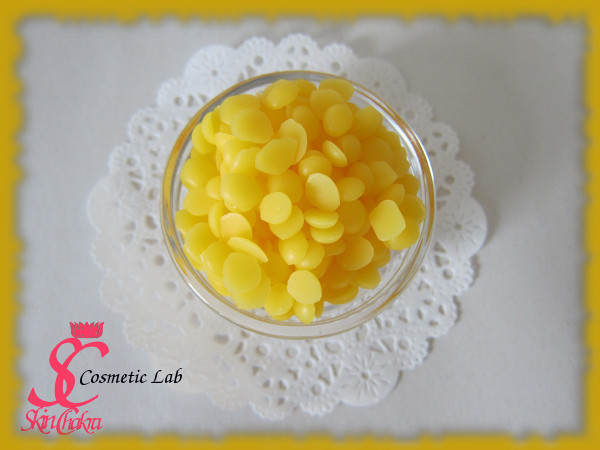
Obviously it is not vegan and plant based but it is affordable and achievable. Herbalists and DIY crafters love this wax and apply it most often in their formulations. Beeswax is no emulsifier, despite many herbalists believing it to be an emulsifier and claiming having created stable emulsions with bees wax that are atable even after a decade. In combination with borax however, it becomes an emulsifier. This is something my grandmother and my great grandmother generation has used. Borax is however under strict regulation in Europe and many othe rparts of the world because of its health concerns (it is classified as CMR 1B in the EU cosmetic directive meaning carcinogenic/mutagenic risk).
Anyway, beeswax certainly has good binding property and because of increasing the viscosity, can cement oil and water together (but can not create any emulsion) or improve the stability of an emulsion.
- melting point 61-65 oC
- saponification value 87-104.
- acid value 17-24
Beeswax is available in different grades from a very intensive yellow to white wax (depending on purification and bleaching grade). Beeswax is even available in organic grade (although I can not imagine how they can train the bees to nourish just from organic flowers). Some literature mention different INCI names for the white (cera alba) and yellow (cera flava) grades. In the COSING directory, both INCI names are applied for all forms of bees wax.
Beeswax adds shine and hold to cosmetic formulations (application in colour cosmetics such as mascara and lipstick), improves adhesion and imparts strong hold in hairstyling products. Beeswax is very popular in lip balm and DIY deodorant balms but less popular in facial balms (because of the sticky skin feel). Beeswax has the ability to adjust the viscosity of W/O emulsions.
The main components of bees wax are esters of long chain fatty alcohols (C30-C32) with palmitic acid (C16:0), palmitoleic acid (C16:1) and oleic acid (C18:1). Cerotic acid is another main constituent.
Beeswax is very often used in protective skin care formulations such as diaper rash1 or barrier protection preparations because of the hydrophobic film it makes over the skin.
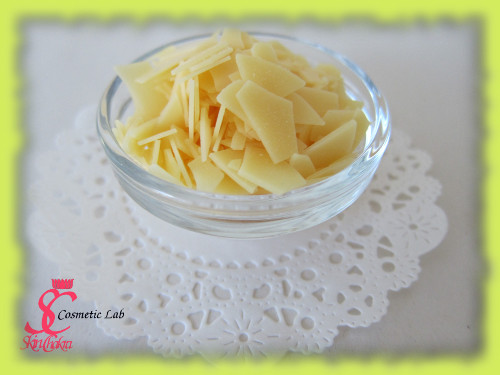
Candelilla wax is probably the nearest beeswax substitute for vegan formulations.
INCI name: EUPHORBIA CERIFERA CERA
The wax is derived from the leaves of the shrub Euphorbia antisyphilitica, a shrub native to mexico. The native wax has a deep yellow colour and a very decent smell. It is available in flakes, granules and lumps. It is available in conventional, bleached or organic certified varieties.
- melting point 68-73 oC
- saponification value 43-65
- acid value 12-22
Candelilla wax imparts gloss and hardness to cosmetic products. It has high oil binding capacity and is less sticky than beeswax. Candelilla wax is used to adjust the viscosity of W/O emulsions.
Candelilla wax's main components are hydrocarbons (up to 45%) and only 20-30% of the wax consists of real long chain fatty esters. Candelilla is gaining popularity in lipstick because of its shine, oil binding and hardness properties.
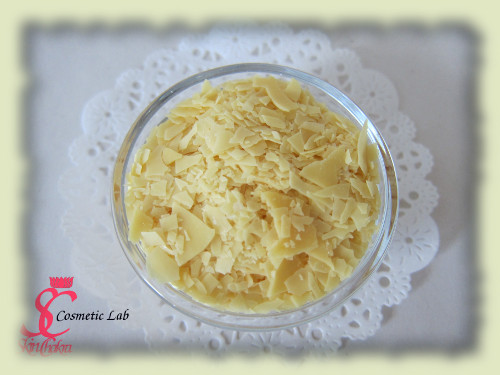
Carnauba wax is a high melting point hard wax. It is derived from the leaves of a the brazilian palm tree known as Copernicia cerifera (wax making ). The wax is a kind of leaf exudate to prevent the leaves from dehydration. It is available from very drak intensive yellow to light beige colour and is offered as flakes, pellets or powder.
INCI name: Copernicia cerifera cera
- melting point 80-86 oC
- saponification value 78-95
- acid value 2-15
Carnauba wax imparts hardness and reduces stickiness (lipsticks for instance) in cosmetic formulation. It is applied in mascara as a volumizing agent. In hair styling products, carnauba wax imparts hold. In W/O emulsions, it is used as a stabilizer and viscosity modifier.
Carnauba's content of hydrocarbons is rather low (compare its sap. value and acid value with candelilla wax).
In modern formulations, carnauba wax is applied as a nano-carrier to disperse inorganic UV filters in aqueous solutions2.
Both carnauba and candelilla wax are applied in barrier repair and therapeutic treatments to reduce TEWL and promote barrier function of the skin3,4.
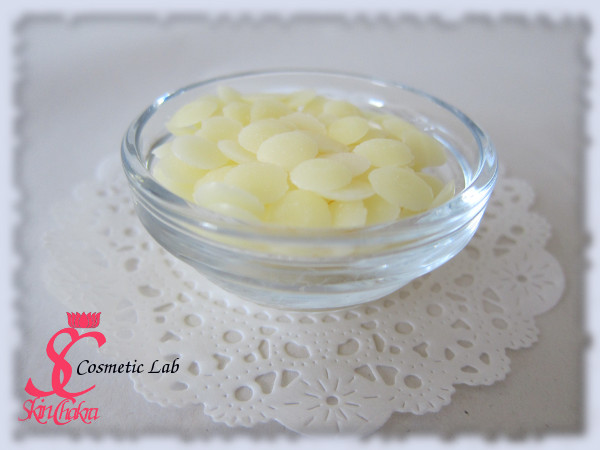
Rice bran wax is maded by de-waxing the virgin rice bran oil. It is a pale yellow hard wax and is available in pellets, beads or powder. Rice bran wax has a very nice, non-sticky skin feel and is used in emulsions as well as oil based products. It is specially used to inhibit syneresis in lipsticks or to stabilize emulsions and balms.
INCI name: Oryza sativa cera
- melting point 79-85 oC
- saponification value 65-95
- acid value <15
The main constituents of the wax are fatty acids and esters of higher alcohols.
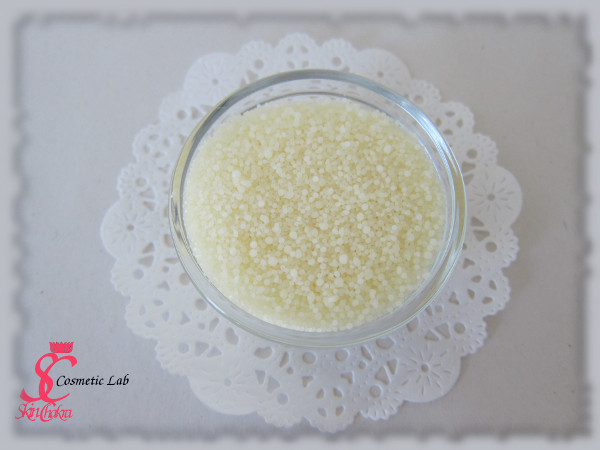
Sunflower wax is extracted via de-waxing of native sunflower oil. It has a yellow pale colour and is available as beads, pellets or chunks.
INCI name: Helianthus annuus seed cera
- melting point 74-80 oC
- saponification value 75-95
- acid value 2-8
Sunflower wax has a high oil binding capacity, adds gloss (hair care, lipstick) and reducess tackiness in cosmetic formulations. It stabilizes both W/O emulsions and oil based products.
Sunflower wax basically consists of saturated esters of long chain fatty acids (C20-C22) and long chain fatty alcohols (C22-29) and long chain hydrocarbons (ca. 70% wax esters and 30% hydrocarbons)5. Behenyl acetate, lignoceryl acetate and methyl lignocerate are the main wax esters.
Appart from cosmetic industry, sunflower wax is very broadly applied in food and pharmaceutical industries as a stabilizer of fruits, oleogels and delivery systems.
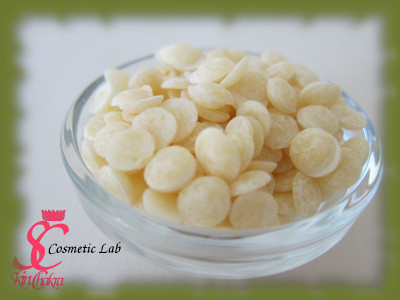
Berry wax is a low melting point and soft wax with a pale colour. The wax is extracted from the peel of the berries of the Rhus verniciflua tree which is called varnish tree or laquer tree as well because the stem exudate is used for production of Japan laquer or China laquer.
This wax should not be exchanged with sumac wax (is called Japan wax as well). Always refer to the INCI name instead of the common names6 to avoid confusion.
INCI name: Rhus verniciflua peel cera
- melting point 48-54 oC
- saponification value 180-220
- acid value 5-30
Berry wax basically consists of palmitic acid, stearic acid and a unique C21 acid, heneicosylic acid. It is a soft wax with a low melting temperature and with a very nice skin feel. It is applied to improve skin feel and texture in stick formulations as well as to stabilize emulsions and oleogels. Berry wax is very often applied in pencil formulations to avoid breaking and improve skin feel (lip liner, eye liner etc.)
In stick formulations such as lipstick, one shall consider the low melting point and combine it with high melting point waxes. In products such as lip-gloss or balms, it could be applied as the stand-alone wax component for a nice texture and skin feel.
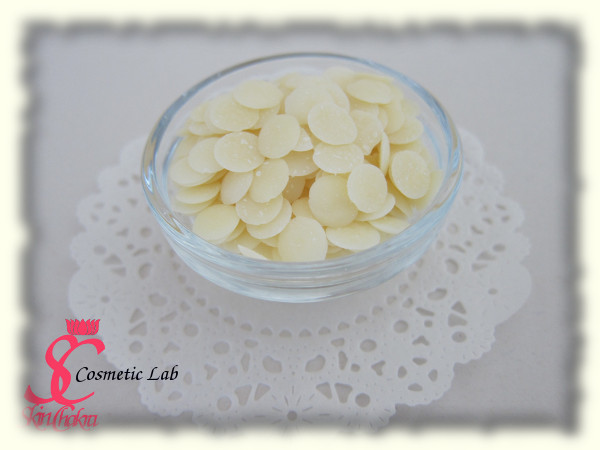
Myrica fruit wax is another low melting point wax which is obtained from the berries of the bayberry. The wax is very pale in colour and has a nice scent.
INCI name: Myrica cerifera fruit wax
- melting point 45-55 oC
- saponification value 210-240
- acid value 5-25
Myrica wax applications are very similar to berry wax. Stabilization of pencils, improving texture and skin feel of balms and stabilizing emulsions as well as application in hair styling products.
Laurel wax is another low melting point wax obtained from fruits of the Myrica Pubescens (by boiling the fruits in water).
INCI name: Myrica pubescens fruit wax (cera)
- melting point 38-46 oC
- saponification value 200-220
- acid value 7-18
Laurel wax is applicable in balms and lotions as well as in lip gloss. For a harder consistency (sticks) it should be combined with high melting point and harder waxes.
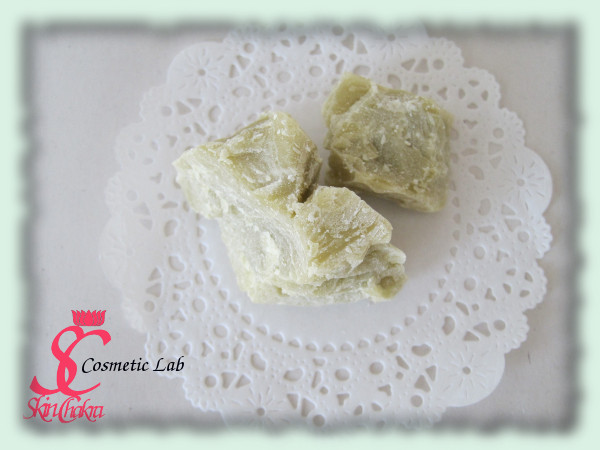
Floral and aromatic waxes:
rose wax, orange wax, momosa wax, jasmine wax and co.
These waxes are no real waxes. These are actually wastes and by products from absolute production. After all the good stuff is extracted, the rest is once more extracted with alcohol and then water and what remains is sold as floral wax.
These are generally very dark in colour andn extremely expensive.
Floral waxes are not quite common/applicable in skin care and do not deliver any texture or skin care benefits. they could be used however for their scents and in making solid perfumes and scented balms. Just try to find some very reliable suppliers who can provide you with the procedure and an analysis of the residues if you're going to apply these waxes in your products.
I hope you have enjoyed this post. Feel free to send me your questions.
I'm sending a PDF file of this post with a comparative table to make a comparison and selection easier for you with the next newsletter. Check your mail box and make sure our newsletter doesn't land into your spambox.
BeHappy and have fun
References and further readings:
1- Siegfried, Elaine C. "Neonatal skin and skin care." Dermatologic clinics 16.3 (1998): 437-446.
2- Villalobos-Hernandez, J. R., and C. C. Müller-Goymann. "Novel nanoparticulate carrier system based on carnauba wax and decyl oleate for the dispersion of inorganic sunscreens in aqueous media." European journal of pharmaceutics and biopharmaceutics 60.1 (2005): 113-122.
3- Draelos, Zoe Diana. "Hydrogel barrier/repair creams and contact dermatitis."American Journal of Contact Dermatitis 11.4 (2000): 222-225.
4- Draelos, Zoe Diana. "Therapeutic moisturizers." Dermatologic clinics 18.4 (2000): 597-607.
5- Soomro, Rizwana K., and Syed Tufail H. Sherazi. "Extraction and characterization of seed oil waxes by using chromatographic techniques."International Journal of Industrial Chemistry 4.1 (2013): 1-7.
6- Dweck, A. C. "Natural waxes, fats and resins." Soap, Perfumery and Cosmetics66.11.
7- Product broschure and information of Kahlwax, Germany










